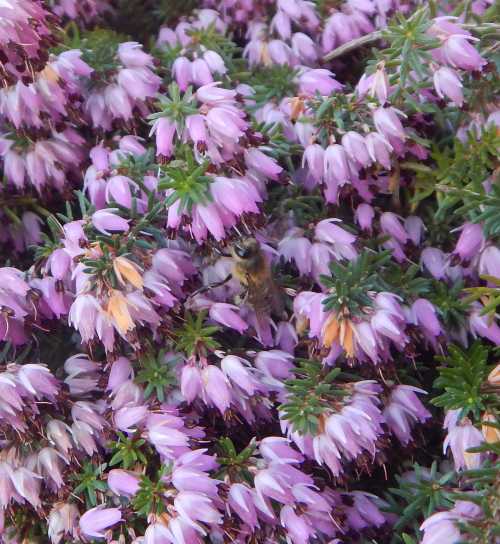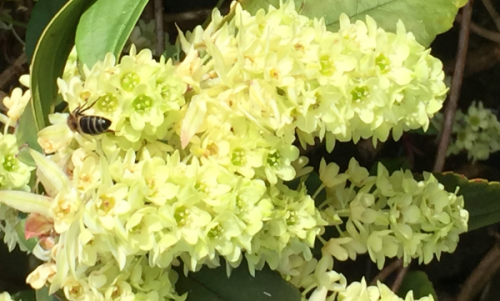Winter Flowering Shrubs For Bees
Contrary to popular belief, some bee species may forage on cool winter days. You can read more on this on my page about honey bees foraging in low temperatures.
In view of this, it's a good idea to provide sources of food for early emerging bees and pollinators.
Honey bees will be keen to gather food to take back to the nest or hive, and new bumble bee queens need the energy and protein from nectar and pollen in order to establish their new colonies.
6 Lovely Winter Flowering Shrubs For Bees
As we head into spring, here are photographs of 6 of my favourite shrubs that have provided flowers in January and February.
If you need to replace any plants in your garden or simply have a space to fill, these flowering shrubs can feed the bees at a time of year when little else is available.
1. Mahonia - Oregon grape
Some Mahonias flower in spring or summer, so be sure to select a winter flowering specimen if you are wanting to provide food for early emerging bees.
Pictured below: two honey bee workers on Mahonia aquifolium in February.
 Honey bee workers on Mahonia aquifolium in February.
Honey bee workers on Mahonia aquifolium in February.
2. Erica - Winter Flowering Heathers
A perfect low-growing shrub for a rockery - we have them in both rockeries in our front and back gardens.
From my observations, the honey bees are usually the first visitors to heathers, soon followed by queen bumble bees.
Again, ensure you select winter flowering specimens, such as Erica carnea f. alba 'Winter Snow' - a white variety, or Erica carnea 'Winter Rubin' if you are looking to add a splattering of pink into your rockery or flower border.
 Winter flowering heathers provide food for bees from January onwards.
Winter flowering heathers provide food for bees from January onwards. Honey bee foraging on Erica carnea.
Honey bee foraging on Erica carnea.3. Daphne bholua 'Jacqueline Postill'
I have written elsewhere about bees foraging on Daphne from January onwards. The fragrance of this pretty bush is simply divine.

Not only did this shrub attract honey bees in January, they were joined by bumble bee queens and comma butterflies in February.

4. Camellia
 Honey bee Apis mellifera foraging on Camellia flower in February.
Honey bee Apis mellifera foraging on Camellia flower in February.Providing lots of pollen, this very attractive evergreen shrub has beautiful flowers and glossy, leathery leaves. It can be grown in containers, so if you have a terrace or small paved yard, this cheery shrub may be worth considering.
Select shrubs that will provide flowers late in the autumn or early in the new year, and choose simple varieties with well exposed, pollen-laden stamens, rather than the highly cultivated double varieties.
 Camellias provide lots of pollen for newly emerged queen bumble bees.
Camellias provide lots of pollen for newly emerged queen bumble bees.5. Ribes laurifolium - Laurel-leaved currant
This lovely shrub thrives in a sheltered position and is very attractive to bees and pollinating flies.
Add it to your garden and keep a look out for the bees on cool February days.
 Honey bee on Ribes laurifolium in February.
Honey bee on Ribes laurifolium in February.6. Sarcococca confusa and hookeriana - Sweet Box
Another shrub with a heavenly fragrance, this gorgeous shrub has delicate creamy-white flowers that feed bees from January onwards.
Read more about the beautiful shrub, Sweet Box.


